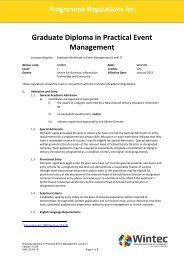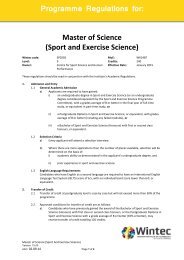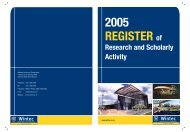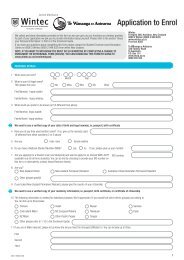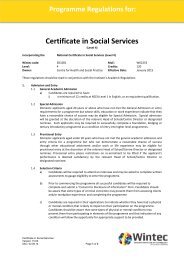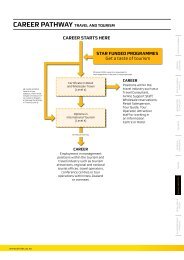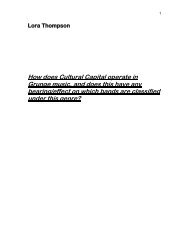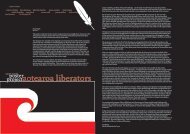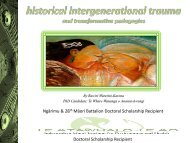Nursing Handover Research Project - Wintec Research Archive
Nursing Handover Research Project - Wintec Research Archive
Nursing Handover Research Project - Wintec Research Archive
Create successful ePaper yourself
Turn your PDF publications into a flip-book with our unique Google optimized e-Paper software.
shares “values, norms and rules of behaviour” and this forms the culture (Schein, 2010,<br />
p.320).<br />
Within any culture or group there are different positions that are held and handover is no<br />
different. The text constructs expert nurses holding power over novice nurses in their ability<br />
to understand and utilise handover information (Meibner et al., 2007). Also nursing students<br />
find handover complicated and hard to comprehend as visitors to the process (Meibner et al.).<br />
“The use of technical language during handover denotes an experienced nurse” (Scovell,<br />
2010, p.36).<br />
Jargon used in handover constructs the group. Jargon excludes those that do not understand it<br />
and validates those that do (Rowe, 2001). The text talks of common general language in use<br />
during handover but also jargon is sprinkled throughout (Fenton, 2006; Radka, 2003). The<br />
use of acronyms and abbreviations makes nursing handover language puzzling to those not<br />
privy to nursing’s professional world (Fenton; Meibner et al. 2007; Strople & Ottani, 2006).<br />
The use of jargon (Fenton) such as STEMI (ST elevation myocardial infarction), CABG<br />
(Cardiac artery bypass graft), HONK (Hyper-osmolar non-ketotic acidosis) are types of<br />
examples that could be commonly heard in handover. Parker and Wiltshire (2004) called this<br />
the ‘nursing gaze’ or ‘savoir’, and the use of language highlights the ever present medical and<br />
scientific discourse.<br />
Anxious nurse identity<br />
“In order to remain responsive to individual patients and deliver humanising care, within<br />
what are increasingly dehumanising environments, it is important nurses have the<br />
opportunity to process aspects of their work that are emotionally disturbing and which they<br />
feel unable to disclose to family or friends” (Parker, 2004, p.137).<br />
The construction of anxiety linked to nursing practice is evident in the text. <strong>Handover</strong><br />
facilitates the ‘off loading’ of this professional anxiety. The handover process also acts a<br />
form of anxiety containment (Sexton et al., 2004) or abjection containment (Wiltshire &<br />
Parker, 1996). Evans et al., (2008) suggest that anxiety may happen in handover in order to<br />
organise nurses’ practice. Being part of this group and culture is supportive and helps process<br />
the experience of a difficult duty. Caring for people puts emotional demands on nurses that<br />
others may not understand. <strong>Handover</strong> allows the nurse a place to discuss confidential matters<br />
that they cannot discuss anywhere else (Parker, 2004) thus maintaining professionalism<br />
24



